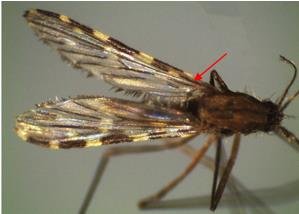
Vector biology
Vector biology is an integral component of the national malaria control programme in the tropical world and is gaining eminence in the context of malaria elimination efforts. More than 70 Anopheles mosquito vector taxa, spread across continents, are implicated in malaria transmission.
Genetics of vector populations and inferences
Genetic investigations, including cross-breeding experiments, cytological analyses and molecular taxonomy of populations exhibiting varied bionomical characteristics, have been performed. These revealed diagnostic differences resulting in speciation and having implications in targeting vector control options. It was the Anopheles maculipennis complex which first explained the phenomenon of ‘Anophelism without malaria’, attributed to the presence of a particular sibling-species having no role in malaria transmission. This phenomenon ushered in the discovery of many other Anopheles species complexes in the global malaria-endemic regions.
To date, as many 28 Anopheles species-complexes have been characterized spread across continents; each one having a variable number of sibling-species ranging from 2 to 17 (a total of 142 vector taxa) having varied roles in malaria transmission. These sibling-species are morphologically undistinguishable, but partially or completely reproductively isolated by pre-mating or post-mating barriers. Given below is the classic example of the best studied dominant vector, Anopheles culicifacies complex in India.
| Anopheles species complex (Subgenus) | No. of sibling-species | Geographic distribution | |
| Albitarsis (Nyssorhynchus) | 10 | Americas | |
| Annularis (Cellia) | 5 | Asia | |
| Annulipes (Cellia) | 17 | Australia-Pacific | |
| Barbirostris (Anopheles) | 6 | Asia | |
| Benarrochi (Nyssorhynchus) | 2 | Americas | |
| Claviger (Anopheles) | 2 | Europe | |
| Crucians (Anopheles) | 7 | Americas | |
| Cruzii (Kerteszia) | 3 | Americas | |
| Culicifacies (Cellia) | 5 | Asia | |
| Dirus (Cellia) | 8 | Asia | |
| Farauti (Cellia) | 8 | Australia-Pacific | |
| Fluviatilis (Cellia) | 3 | Asia | |
| Gambiae (Cellia) | 9 | Africa | |
| Gigas (Anopheles) | 4 | Asia | |
| Konderi (Nyssorhynchus) | 2 | Americas | |
| Leucosphyrus (Cellia) | 5 | Asia | |
| Lindesayi (Anopheles) | 4 | Asia | |
| Lungae (Cellia) | 3 | Australia-Pacific | |
| Marshallii (Cellia) | 4 | Africa | |
| Minimus (Cellia) | 3 | Asia | |
| Nili (Cellia) | 4 | Africa | |
| Nivipes (Nyssorhynchus) | 2 | Asia | |
| Nuneztovari (Nyssorhynchus) | 3 | Americas | |
| Oswaldoi ((Nyssorhynchus) | 6 | Americas | |
| Subpictus (Cellia) | 4 | Asia | |
| Sundaicus (Cellia) | 6 | Asia | |
| Superpictus (Cellia) | 4 | Asia | |
| Stephensi (Cellia) | 3 | Asia | |
| Total: 28 | 142 | ||
Anopheles culicifacies complex: techniques applied and species composition
The An. culicifacies complex has been studied in-depth for its sibling-species composition and malaria pathogen transmission relationships. In the Indian sub-continent, it is responsible for generating >60% of malaria cases in the country. Aided by a wide-array of diagnostic techniques, it has been characterized to be comprising of five sibling species, informally designated A, B, C, D and E having varied distributions and transmission relationships.
Distribution of sibling-species of Anopheles culicifacies and disease transmission
Amongst the five sibling-species, species B is spread throughout rural India whereas species A is more abundant in the north than B and vice versa in the south. Species C is predominant in the west and east and overlaps with species D in central and western Indian states. Species E is exclusively recorded in south India and is believed to be invading other endemic states. Among these, whereas species B is a poor vector due to its zoophilic biting preference; A, C and D are of moderate significance, and E is an efficient malaria vector.

Sibling-species and vector control options
Vector control in India largely rests on indoor residual spraying operations, supplemented by insecticide-treated mosquito nets (the distribution of which remains patchy); incurring huge costs, the larger share of which relates to control of An. culicifacies alone. The given distribution of sibling-species has direct bearing in the national control programme by prioritizing interventions in regions predominated by A and E (the efficient vectors) vis-à-vis species B, C and D, thereby saving operational costs.
Species sanitation in the context of malaria elimination
An. culicifacies is a robust mosquito and is fast invading newer territories; populations of which are resistant to multiple insecticides. It is a fast-evolving mosquito species in the rapidly changing ecological context, given the human population explosion, deforestation and infrastructure development. This poses renewed challenges to elimination efforts. Its control has become of paramount importance, not only for containment of vector populations but also for preventing re-establishment of active transmission in malaria-free territories.
Due to new knowledge of disease distribution and vector bionomics, the malarial threat is receding in India, and fast accelerating towards elimination. However, in keeping pace with the global elimination efforts, universal coverage of interventions for keeping vector population at bay must be prioritized by combining integrated vector control strategies specific to the given geographic area to end malaria.

Comments